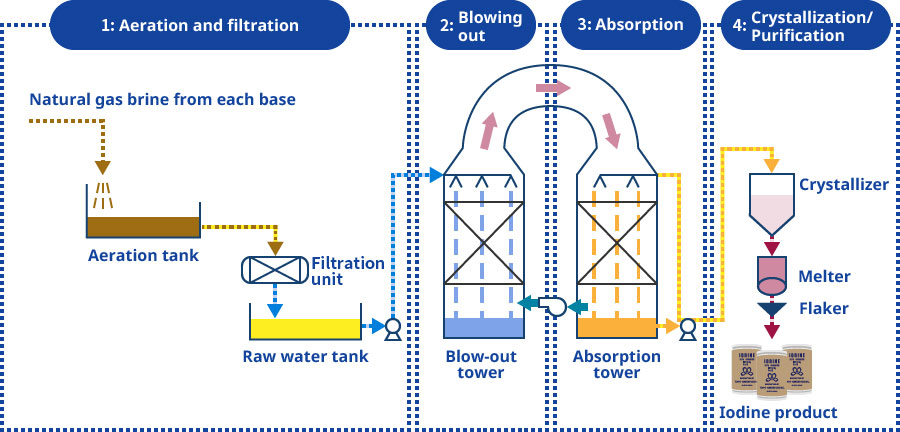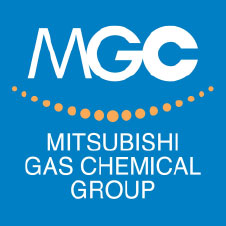Iodine Business
Iodine Business
Properties and Characteristics
General Properties of Iodine
Groundwater containing natural gas is referred to as natural gas brine, and this brine contains iodine, a globally valuable element.
Iodine, a halogen, is a semi-lustrous solid at room temperature. It sublimates readily, has a distinctive odor, and produces a purple vapor at room temperature.

▲ Iodine product
| Atomic number | 53 |
|---|---|
| Element symbol | I |
| Atomic weight | 126.9 |
| Density | 4.93g/cm³ (20℃) |
| Melting point | 113.6℃ |
| Boiling point | 184.4℃ |
Global production of iodine
Japan is the world's second largest producer of iodine after Chile. Of the iodine produced in Japan, 82% is produced in Chiba prefecture, 11% in Niigata prefecture, and 7% in Miyazaki prefecture.
Iodine is a highly valuable underground resource whose production in Japan is commercially significant worldwide.
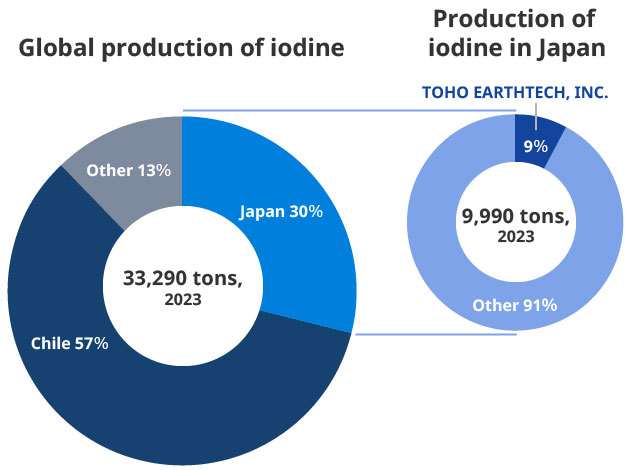
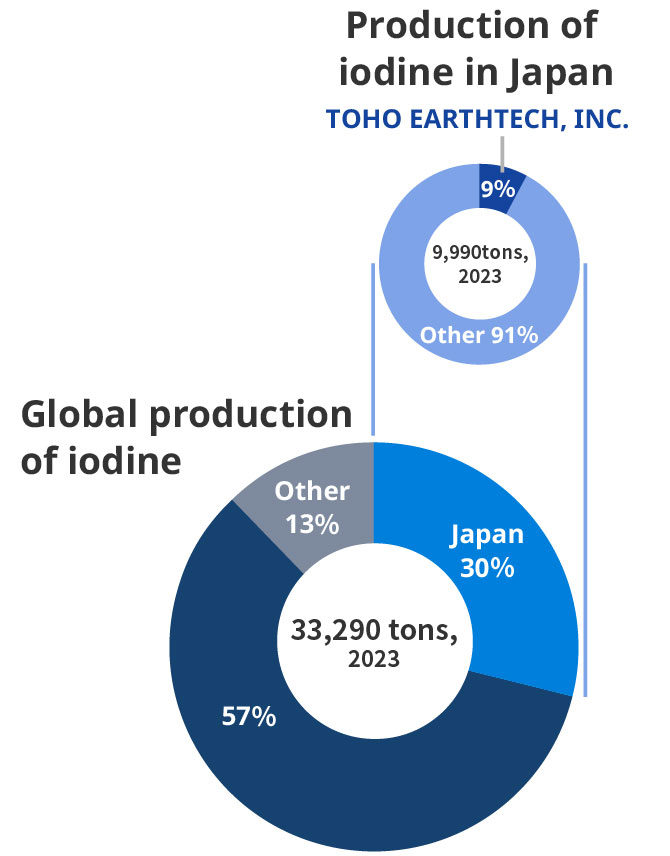
Iodine Applications
Iodine, which has long been used as a raw material in pharmaceuticals, is currently used in a wide range of fields, from industrial applications to energy development. More recent applications include use in solar-powered hydrogen generation, which is drawing attention as a next-generation energy source, and use in coal liquefaction to produce an alternative to petroleum. Iodine is also used in advanced technological fields such as in drugs administered to protect the human body from radioactive contamination and as a material for generating laser beams. Iodine also has applications in daily living, such as in pharmaceuticals like X-ray contrast agents and new antibiotics; as an automobile seat belt and tire chemical fiber reinforcing agent; and as an agricultural chemical component and film media photosensitizing agent.


Iodine Production
Iodine Production Methods
Components in natural gas brine (compared with seawater)
Iodine exists in far higher concentrations in natural gas brine compared to seawater, and it is extracted using the blow-out process to produce commercial products.
| Component | Content in natural gas brine [mg/L] | Content in seawater [mg/L] |
|---|---|---|
| Chlorine | 14,000 | 19,000 |
| Bromine | 90 | 65 |
| Iodine | 40 | 0.05 |
| Bicarbonate ion | 770 | 1,400 |
| Sodium | 9,070 | 10,600 |
| Potassium | 480 | 380 |
| Ammonium | 150 | - |
| Magnesium | 480 | 1,270 |
| Calcium | 310 | 400 |
| Iron | 6 | 1 |
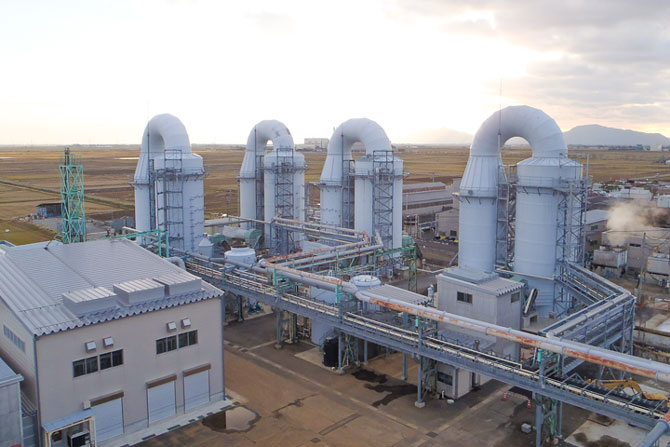
▲ External view of BO (blow-out) tower
Iodine production by blow-out process
- 1: Aeration/filtration process: Impurities that hinder iodine production are removed.
- 2: Blow-out process: Iodine vapor is expelled from the natural gas brine into the air.
- 3: Absorption process: The iodine vapor discharged from the blow-out tower is recovered and concentrated.
- 4: Crystallization/purification process: The purity of the recovered iodine is increased to produce the final iodine product.
Products
Iodine
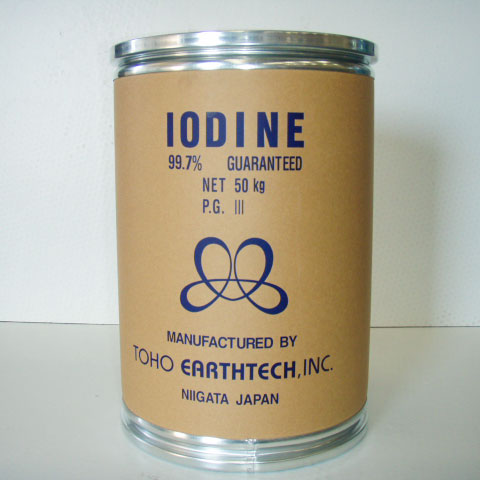
Package
| Chemical formula | I2 |
|---|---|
| Molecular weight | 253.81 |
| CAS No. | 7553-56-2 |
| Package | Fiber drum, 50 kg |
| Purity | ≥99.7% |
Potassium Iodide
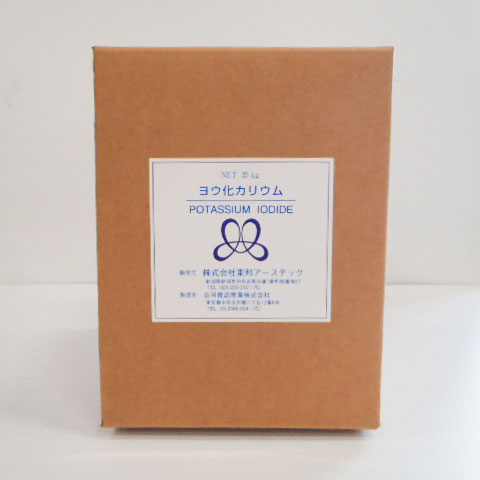
Package
| Chemical formula | KI |
|---|---|
| Molecular weight | 166.01 |
| CAS No. | 7681-11-0 |
| Package | Cardboard box, 25 kg |
| Purity | ≥99.5% |

